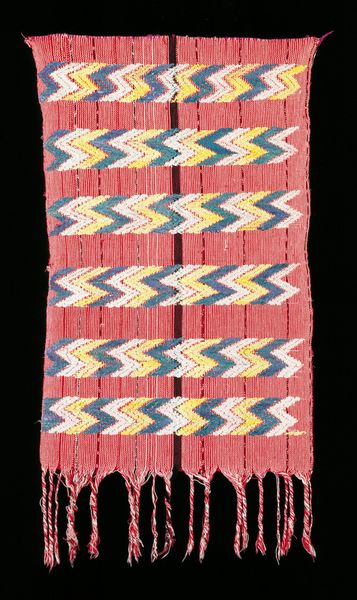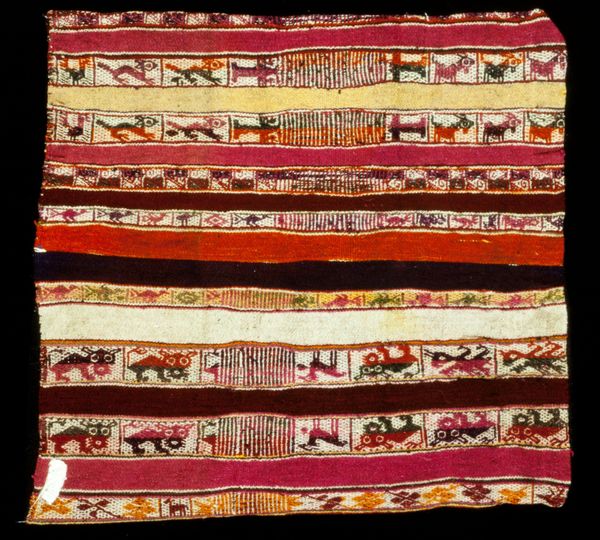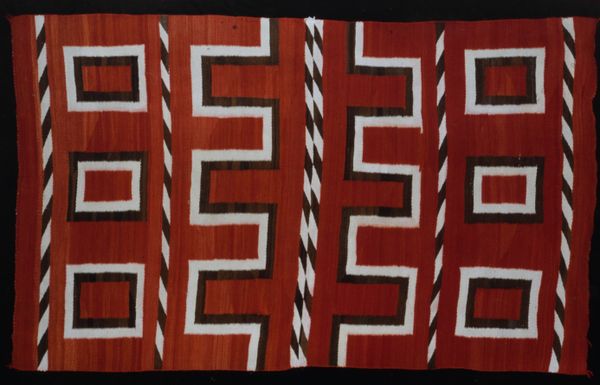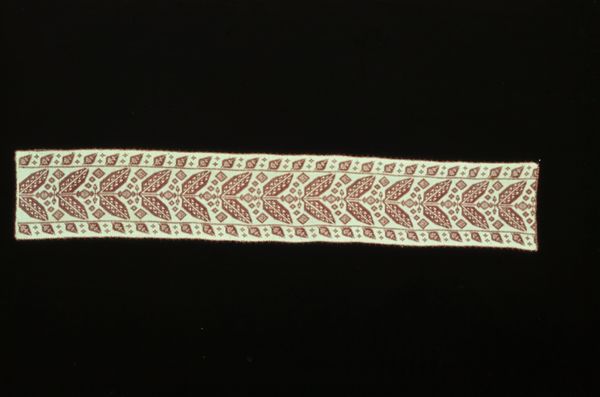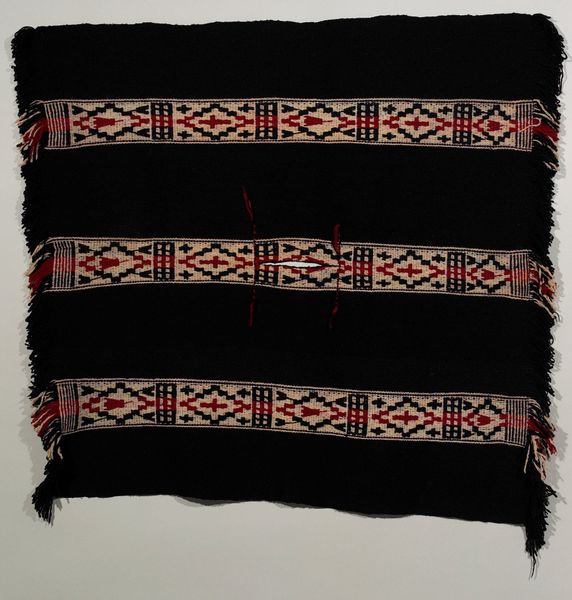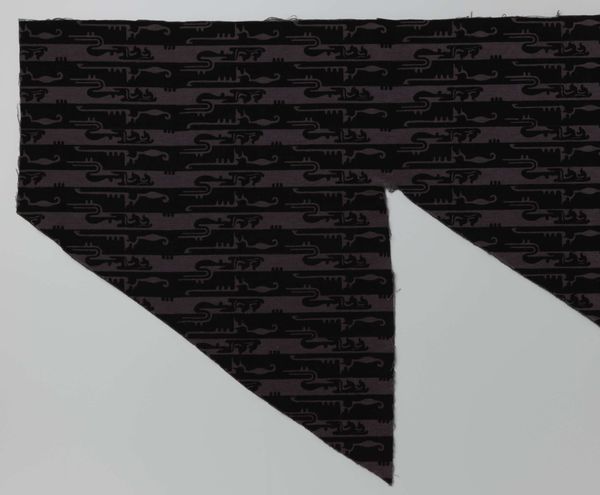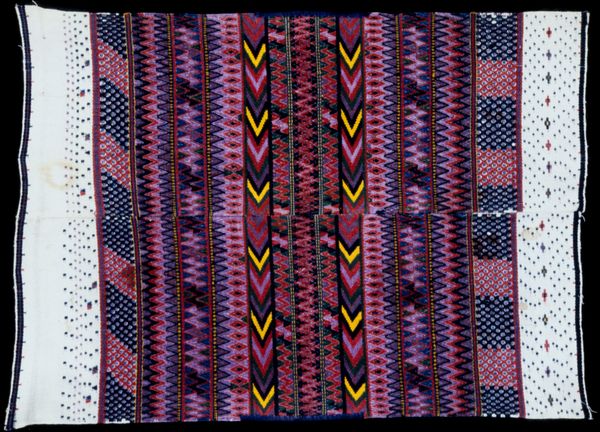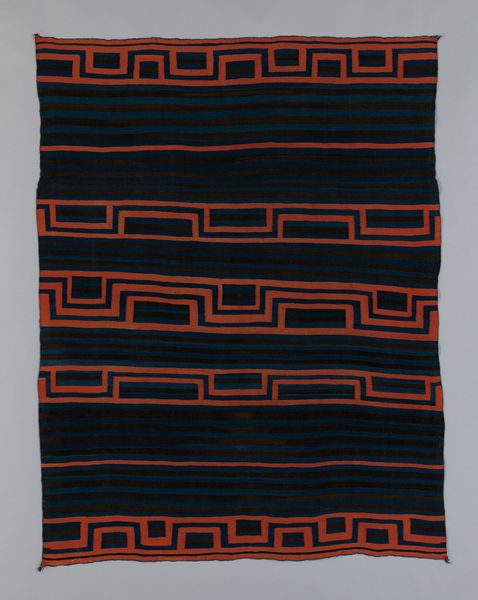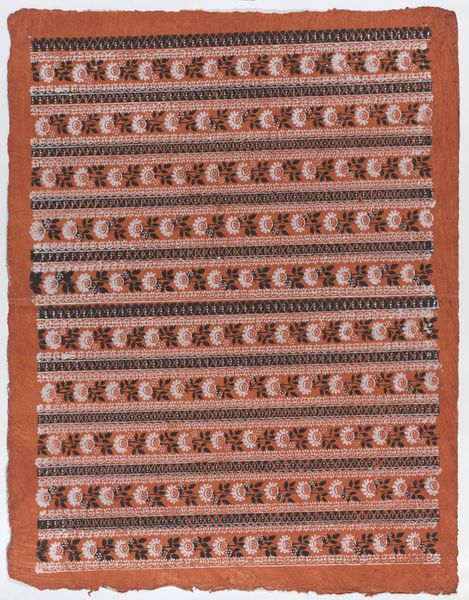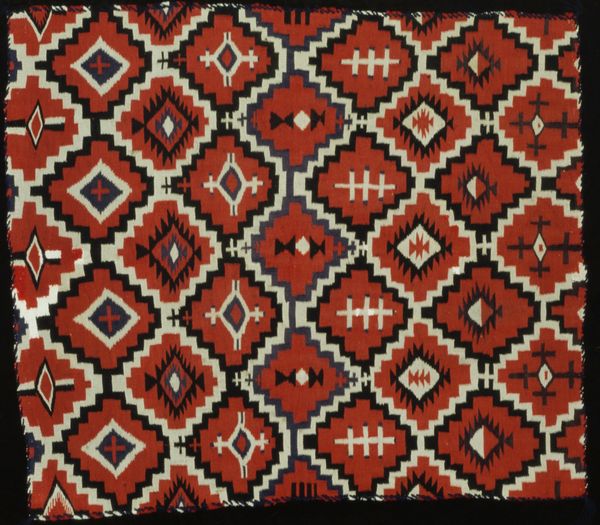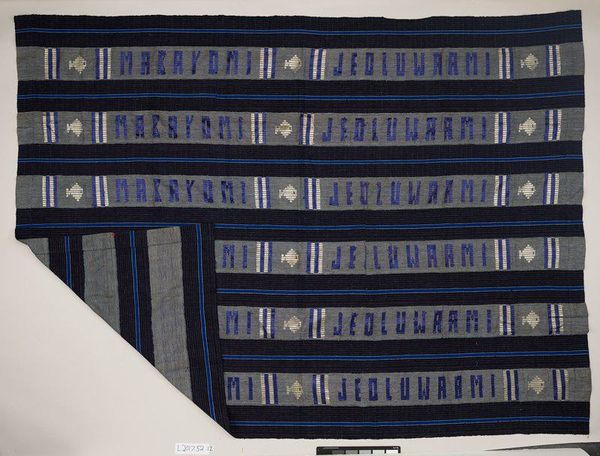
fibre-art, weaving, textile, cotton
#
fibre-art
#
weaving
#
textile
#
geometric
#
pattern repetition
#
cotton
#
decorative-art
Dimensions: 86 x 50 1/2 in. (218.44 x 128.27 cm) (irregular, including fringe)
Copyright: Public Domain
Curator: So, here we have what's known as a 'Wrapper', believed to originate sometime in the 20th century. It's a textile piece; mostly cotton through the fiber-art and weaving traditions, now residing here at the Minneapolis Institute of Art. Editor: Wow, immediate vibes are...bold. High contrast! It feels graphic, almost like a coded message with the strong red, black and white geometric motifs. I want to reach out and touch it, feel the texture. Curator: Indeed! Considering its cultural roots possibly in African weaving, the interplay of geometry and indigenous patterns provides a powerful visual language. We can explore how these designs relate to historical power structures and community identity within the region it comes from. The piece calls us to deconstruct narratives about tradition and modernity, looking at textile art not as static craft but as dynamic expression. Editor: It’s the repetition, right? How the pattern plays with your eye, almost hypnotic. It feels very purposeful – like each element has a specific resonance. Maybe something akin to symbolism, perhaps a cultural emblem for a group. Makes you consider the function...was it just decorative or was it...something else? A status symbol? Curator: Absolutely, the repetition can be viewed as a conscious aesthetic and political choice. Textile arts are often deemed domestic, therefore inherently ‘lesser’ than more public art forms like painting or sculpture, therefore, it has faced a chronic neglect and underestimation. Appreciating this ‘wrapper’, then, necessitates recognizing it as resistance and asserting cultural presence. It’s never "just decoration." Editor: Yes! There's definitely a sense of coded history in those woven strands! It sparks my imagination about those skilled hands, repeating patterns over time, breathing stories into fabric. It's that intersection between craft and culture which makes it particularly moving to experience, right? Curator: Precisely, let’s push against conventional art boundaries by bringing critical inquiry of decolonial methodologies and looking at how material culture operates to reproduce or challenge social orders. What do these visual patterns say when positioned amongst complex debates on authenticity? Editor: Seeing it through that prism makes it all more intense – like seeing history through woven threads! Okay, my perspective on that piece just exploded, haha. Curator: That’s the power of textiles. It weaves history, identity and artistic skill into tangible form that anyone should appreciate.
Comments
No comments
Be the first to comment and join the conversation on the ultimate creative platform.

